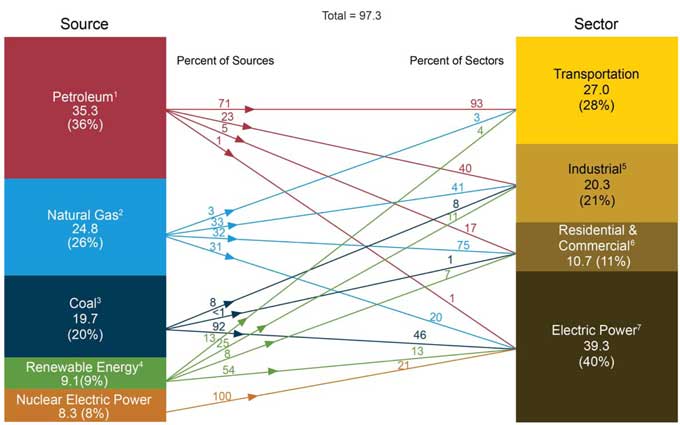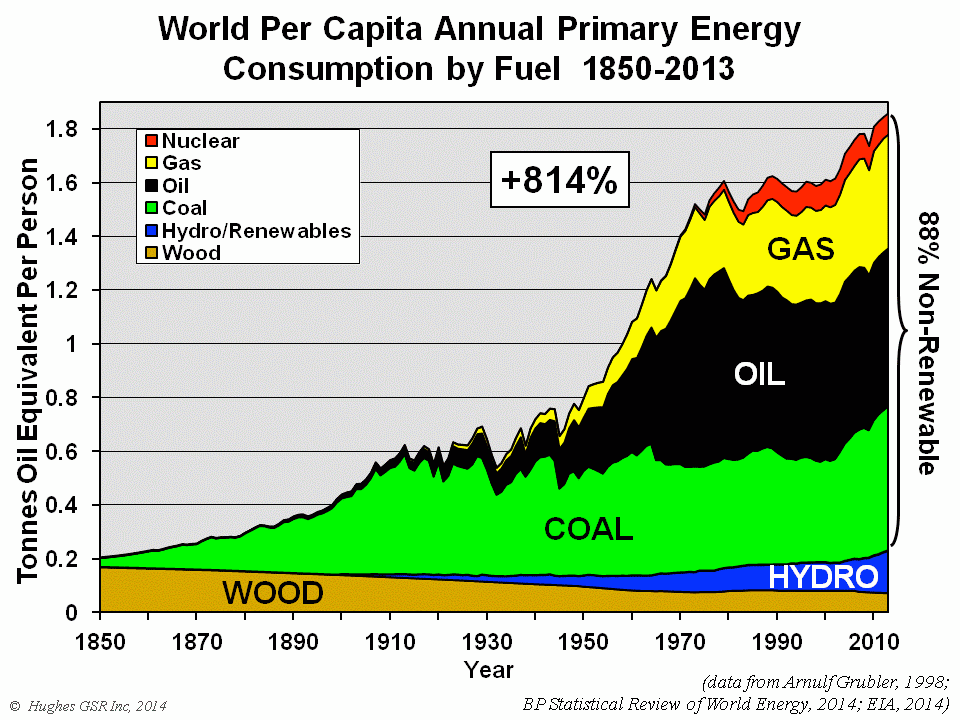In a very worthwhile recent essay on our post-carbon future, Richard Heinberg discusses the various aspects of our transition to a society, and specifically economy, that is not powered by carbon-based fuels. Often this discussion is approached from two opposing view points. On the one hand we have the belief that there is abundant renewable energy provided by sun and wind and that mankind will undoubtedly overcome any technological hurdle that keeps us from a sustainable future. On the other, there are plenty of doomsday scenarios on how our current growth driven consumer society is about to collapse in a world of finite resources (arguably there is also a third view that neither peak oil nor climate crisis are real and we can just continue the party as before, but we can safely dismiss this in my view). The correct approach might lie, as often, in the middle way and only a sober, fact based analysis will show us a meaningful course of action.
To distill his detailed essay, the most interesting points for me were as follows:
Usage of primary energy
We often analyze the use of renewables only in the context of electricity generation (wind, PV, hydro, etc.). However, only about 40% of all primary energy is consumed for power generation. The rest is required for transportation, heating, manufacturing, agriculture, etc. A complete strategy for a sustainable future will need to provide strategies to eliminate the carbon energy in the 60% as well. This means that above the need for renewable power generation we need to think about the use of energy in all other sectors. Radical efficiency and wise use of primary energy will be the hallmark of such strategies.
(source: EIA)
The intermittancy challenge
The effectiveness of renewable sources to replace carbon-based sources has to factor in the intermittancy of generation. Wind and solar are erratic and produce sometimes a lot, some not enough energy. Once renewable sources reach a certain percentage of the overall grid mix, further investments are required in storage capacity, grid upgrades for power distribution as well as to handle a more decentralized production of electricity. According to a recent study by Weissbach, renewable systems might not be able to provide a positive EROI if all the costs are factored in.
Embodied energy and distribution energy
Renewable energy sources cannot only be measured by their direct generation cost. While the lack of input materials such as coal, gas, etc. makes renewables by now cost efficient in their kWh prices of generation (leaving the complex topic of subsidies for all energy sources aside), we also have to account for the energy required to produce things like solar panels, to distribute and assemble them. This is all only possible with carbon energy today and it is unclear how a self-propelled replacement strategy could look (e.g. solar breeders, etc.). In any case, if accessible carbon-based energy will dramatically decline in the next decades, it must not be squandered but primarily be used to drive the transition to renewable energy. This must be a major focus of policy.
Energy density drives energy use
Carbon fuels, specifically oil, have an incredible energy density for weight or volume. It is an energy store created by nature over millions of years using plants, sun light, pressure and heat. Today's renewable adhoc conversion of sun (and the resulting wind) energy plus its storage cannot come close to this level of energy density. Certain energy uses, like aviation, are hard to imagine without such a high density. Global transportation of goods in a global trade economy becomes doubtful. We must look for opportunities to replace carbon energy with renewables where it is easy for us to do. We must consider more localized economies. We cannot waste the remaining energy on useless goods or low-value uses. Analysis has to focus on where we can live with a lower density and replace those uses first.
Additivity
Mankind has in the past switched energy sources from wood to coal to oil to nuclear. But those transitions have been additive in order to satisfy the rapidly increasing demand for energy to support our wealthy lifestyles and global population growth. The next century will pose the challenge not to add, but replace these sources with renewable ones.
(source: David Hughes)
The right questions
Using Google's RE<C project as an example, we need to review if we are asking the right questions of renewables. It seems very clear by now that they cannot in any form uphold the existing growth-based, resource-depleting consumer society model (which is independent of energy discussions an absurd model in a finite world). The more relevant questions center around how an economy and society will function given the natural constraints of a sustainable system and, equally important, how we most expediently transition to that state.
Overall, I believe Heinberg's essay rightly points us to not falling into the opposing camps of the Cornucopians or Doomers. We need to rationally work out what is realistically possible and how to get there. We need to focus on energy generation and energy use. We need to work out transition strategies for all sectors. Our work is cut out for us.




No comments:
Post a Comment